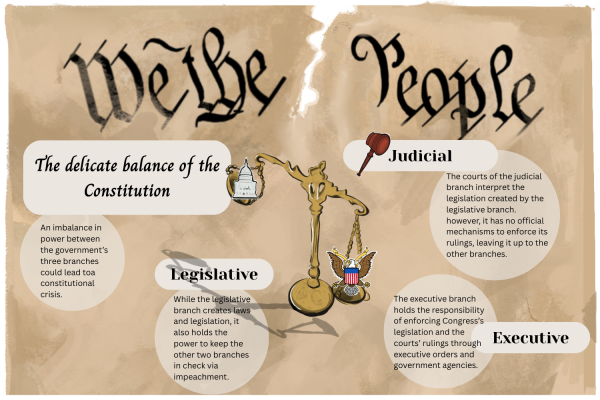Vaping: A Q&A with a health professional
In this Q&A, Nick Goldenson, a doctoral student in the USC Health, Behavior and Addiction Laboratory (USC-HEAL) discusses vaping based on the existing scientific literature, particularly the 2018 National Academy of Science, Engineering and Medicine’s (NASEM) report on the Public Health Consequences of E-Cigarettes and the 2016 Surgeon General’s report on E-Cigarette Use Among Youth and Young Adults.
Introduction
The rapid increase in e-cigarette use (vaping) among teenagers in the past several years has raised concerns. E-cigarettes are tobacco products that deliver nicotine, a highly addictive substance that can harm adolescent brain development. Use of any tobacco product (including vaping) by teenagers is not safe, and there are many unanswered questions regarding the long-term health effects of vaping.
What are the effects of vaping?
The effects of vaping can be separated into two main categories: (1) the health effects of vaping; and (2) the effects of vaping nicotine on adolescent development and behavior.
First, it is important to note that use of any tobacco product (including vaping) is not safe. Vaping exists on a continuum of risk; while vaping is generally considered “safer” than smoking combustible cigarettes, e-cigarette aerosol contains harmful and potentially toxic constituents known to have adverse health effects. In addition, there is evidence that vaping can result in increased coughing and wheezing and asthma among users. Furthermore, e-cigarette devices can explode and cause burns, and exposure to e-liquids with nicotine can result in acute toxicity and even death. Since e-cigarettes have only existed for slightly over a decade, the long-term health effects of vaping on the respiratory and cardiovascular systems are not currently known.
Nicotine is a highly addictive substance, and teenagers are particularly vulnerable to nicotine addiction. Exposure to nicotine during adolescence can harm the developing brain leading to deficits in attention, cognition and impulse control as well as other mental health problems. There is also a growing body of evidence that e-cigarette use among nonsmoking youth increases risk of subsequent combustible cigarette smoking and progression in tobacco product use.
Have you noticed a rise of teenagers vaping? If so, what do you think causes that?
Yes, there has been a dramatic increase in vaping among teenagers across the U.S. in recent years. Among middle and high school students, use of e-cigarettes has more than tripled since 2011. E-cigarettes are now the most commonly used tobacco product among youth in the United States (surpassing combustible cigarettes).
There are a number of factors that may contribute to the popularity of vaping. Adolescents perceive e-cigarettes to be less harmful and addictive than combustible tobacco products—a major risk factor for use. In national surveys, other commonly cited reasons for vaping include curiosity about e-cigarettes, the good taste of vaping and the availability of appealing (often sweet) flavorings. There is also evidence that e-cigarette companies are using many of the same advertising tactics (e.g., celebrity endorsements, sexualized and glamorized content) that the tobacco industry has traditionally employed to attract teenagers. Also important to note, youth do not typically report vaping in order to quit smoking conventional cigarettes.
Why do you think teenagers start vaping?
There are a number of psychosocial and environmental factors that may contribute to teenagers initiating vaping. As mentioned above, e-cigarettes are often viewed by youth as being less harmful than combustible tobacco products, which encourages experimentation. Teenagers also perceive vaping as “cool,” “modern,” or “high-tech.” In surveys, other common reasons for starting vaping include curiosity about e-cigarettes, the availability of appealing flavorings and social approval from peers. The ability to hide e-cigarettes from parents and teachers is another reason teenagers start vaping, as witnessed in a number of recent articles regarding JUUL (a popular e-cigarette device that resembles a USB drive). Once beginning vaping, teenagers may become addicted to nicotine and experience symptoms of nicotine dependence.
What are the connections between e-cigarettes and traditional tobacco?
Vaping has been shown to increase risk of future combustible cigarette smoking and use of other tobacco products (e.g., hookah, cigars). The 2018 National Academy of Science, Engineering and Medicine’s (NASEM) report on Public Health Consequences of E-Cigarettes found substantial evidence that e-cigarette use increases risk of using combustible tobacco cigarettes among youth. Since tobacco product use is frequently established during adolescence, there is concern that today’s vapers could become tomorrow’s cigarette smokers.
What are the differences between vaping and other substances?
There are several differences between vaping and cigarette smoking. While vaping has been shown to deliver comparable amounts of nicotine as smoking, vaping does not involve the combustion of tobacco and as a result does not expose vapers to many of the toxicants and carcinogens present in combustible tobacco cigarettes. Vaping devices can also be used to deliver other psychoactive substances such as cannabis (THC).
Is there anything else you would like to add?
Another important issue to consider is the role that flavorings (often fruit and candy) play in vaping. The widespread availability and popularity of flavored e-cigarettes has raised concerns that sweet flavors may be increasing vaping and tobacco use among youth. Flavorings have traditionally been added to tobacco products by tobacco manufacturers to attract youth by masking the harshness of tobacco/nicotine. As a result, in 2009 Congress banned flavored combustible cigarettes with flavors other than tobacco or menthol, as part of the Family Smoking Prevention and Tobacco Control Act. Despite this ban on cigarettes, e-cigarettes are currently available in a wide variety of sweet flavorings. The Food and Drug Administration (FDA) recently released an Advance Notice of Proposed Rulemaking (ANPRM) to solicit feedback on future regulatory policies regarding flavored tobacco products.
Conclusion
E-cigarette use among teenagers is a major public health concern. Teenagers who do not smoke but vape are more likely to begin smoking cigarettes in the future. While e-cigarettes are generally believed to be less harmful than combustible tobacco cigarettes, it appears few teenagers are using e-cigarettes to quit smoking. Education and prevention strategies are needed to prevent teenagers from becoming addicted to nicotine and reduce the harmful effects of vaping.































































